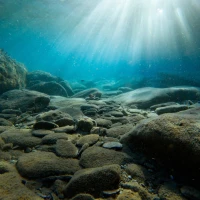Diving is an exciting and exhilarating sport that allows us to explore the underwater world. From coral reefs teeming with vibrant marine life to mysterious shipwrecks that hold tales of the past, divers are constantly seeking new ways to push boundaries and delve deeper into the depths of the ocean.
In this article, we will discuss 43+ advanced diving techniques that will take your diving skills to new heights. Whether you’re a beginner looking to expand your knowledge or an experienced diver seeking new challenges, these techniques will inspire you to explore the underwater world like never before.
Why Pushing Boundaries Matters in Diving
Diving is not just about observing marine life and exploring underwater landscapes. It’s about constantly pushing boundaries and challenging ourselves to reach new depths. Here are a few reasons why pushing boundaries matters in diving:
-
Personal Achievement: Pushing boundaries in diving allows you to set and achieve new goals. Each time you overcome a challenge, you gain a sense of accomplishment and personal growth.
-
Adventure and Exploration: By pushing boundaries, you open up new opportunities for adventure and exploration. Discovering new dive sites and conquering difficult conditions adds excitement to your diving experience.
-
Skill Development: Pushing boundaries in diving forces you to expand your skills and knowledge. As you tackle advanced techniques, you become a more skilled and confident diver.
-
Deepening Connection with Nature: Exploring new depths and encountering rare marine species creates a deeper connection with the underwater world. It fosters a sense of stewardship and a desire to protect and preserve our oceans.
Now that we understand the importance of pushing boundaries in diving, let’s explore some advanced techniques that will take your diving to the next level.
Preparing for Advanced Diving Techniques
Before attempting advanced diving techniques, it’s crucial to ensure you have the necessary skills and equipment. Here are some steps to prepare for advanced diving:
1. Obtain Advanced Diving Certifications
To safely engage in advanced diving techniques, you should have the appropriate certifications. Examples of advanced certifications include:
-
Advanced Open Water Diver: This certification expands on the basic open water training and introduces new skills and techniques.
-
Enriched Air Nitrox Diver: Nitrox diving allows you to breathe a gas mixture with a higher oxygen content, extending your bottom time and reducing fatigue.
-
Deep Diver: This certification focuses on the techniques and considerations involved in diving to greater depths.
Obtaining these certifications demonstrates your competence and readiness to explore advanced diving techniques.
2. Master Buoyancy Control
Buoyancy control is crucial for every diver but becomes even more critical when attempting advanced techniques. Achieving neutral buoyancy allows you to conserve energy, maintain stability, and navigate through the water effortlessly. Practice buoyancy control in controlled environments to ensure you’re comfortable and confident before attempting advanced dives.
3. Invest in Top-Quality Gear
Advanced diving often requires specialized equipment. Ensure your gear is in excellent condition and appropriate for the dive conditions. Some essential gear for advanced diving includes:
-
Dive Computer: A dive computer provides critical information such as depth, bottom time, and decompression limits, helping you plan and execute safe dives.
-
Dive Lights: Dive lights are necessary for exploring dark areas and enhancing visibility during night dives or cave dives.
-
Underwater Camera: Capturing your underwater adventures is a great way to document your progress and share your experiences with others.
By preparing yourself with the necessary certifications, mastering buoyancy control, and investing in top-quality gear, you’ll be ready to dive into the world of advanced diving techniques.
Advanced Diving Techniques
Let’s dive into the world of advanced diving techniques. From cave diving to wreck diving, these techniques will challenge your skills and open up new possibilities for exploration.
1. Deep Diving
As the name suggests, deep diving involves exploring greater depths than recreational diving. Here are some key considerations for deep diving:
-
Gas Management: Deep dives require careful gas management to avoid exceeding decompression limits. Calculate your gas requirements and plan your dives accordingly.
-
Safety Stops: It’s essential to include safety stops during ascents from deep dives to off-gas nitrogen and reduce the risk of decompression sickness.
-
Underwater Navigation: Maintaining proper navigation skills becomes crucial as the conditions change with depth. Use compasses and natural landmarks to navigate effectively.
2. Night Diving
Night diving offers a unique and thrilling experience. Here are some tips for a successful night dive:
-
Dive Lights: Carry powerful dive lights to enhance visibility and illuminate your surroundings.
-
Buddy System: Always dive with a buddy during night dives for added safety and support.
-
Species Observation: Many marine species exhibit different behaviors at night. Keep an eye out for nocturnal animals and their activities.
3. Wreck Diving
Exploring sunken vessels is an exciting way to dive into history. Here are some considerations for wreck diving:
-
Wreck Penetration: Diving into wrecks requires specialized training and equipment. Always ensure your wreck penetration skills are advanced before attempting.
-
Marine Life: Wrecks often serve as artificial reefs, attracting a diverse range of marine life. Keep an eye out for unique species and their habitats.
-
Safety First: Wrecks can be hazardous, with potential entanglement and confined spaces. Always prioritize safety and follow proper procedures.
4. Ice Diving
Ice diving offers a surreal and captivating experience. Here’s what you need to know before attempting an ice dive:
-
Training: Ice diving requires specialized training due to the increased risks associated with diving in cold water and limited access to the surface.
-
Safety Equipment: Ensure you have the necessary safety equipment, such as drysuits, ice picks, and ropes, for emergency situations.
-
Under-Ice Navigation: Proper navigation skills are crucial during ice dives. Maintain a clear line of entry and exit to ensure your safety.
5. Cave Diving
Cave diving is an advanced diving technique that requires specialized training and equipment. Here are some essential cave diving considerations:
-
Training and Certification: Obtain cave diving certifications from recognized organizations to ensure you have the necessary skills and knowledge.
-
Guidelines and Markings: Follow cave guidelines and always pay attention to markings that indicate the way in and out of the cave.
-
Emergency Planning: Cave diving carries inherent risks. Develop thorough emergency plans and practice emergency procedures regularly.
Comparing Advanced Diving Techniques
To help you understand the differences between various advanced diving techniques, here’s a comparison chart:
| Technique | Key Considerations |
|---|---|
| Deep Diving | Gas management, safety stops, underwater navigation |
| Night Diving | Dive lights, buddy system, nocturnal species observation |
| Wreck Diving | Wreck penetration, marine life observation, safety procedures |
| Ice Diving | Specialized training, safety equipment, under-ice navigation |
| Cave Diving | Training and certification, following guidelines, emergency planning |
By comparing these techniques, you can choose the ones that align with your interests and diving goals.
Conclusion
Pushing boundaries in diving is an exhilarating journey that allows us to explore the underwater world like never before. By incorporating advanced diving techniques into your diving repertoire, you can discover new depths, encounter unique marine species, and gain a deeper understanding of our oceans.
Remember, advancing your diving skills requires thorough preparation, mastering buoyancy control, and investing in quality equipment. By following proper training and safety guidelines, you can embark on exciting adventures that push the boundaries of what you thought was possible in diving.
So, gear up, dive in, and embark on a journey to new depths with these 43+ advanced diving techniques. Happy diving!









